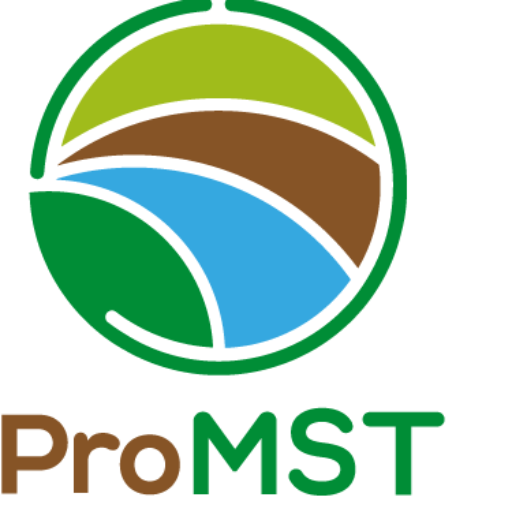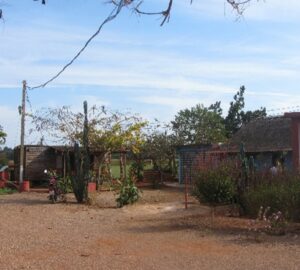
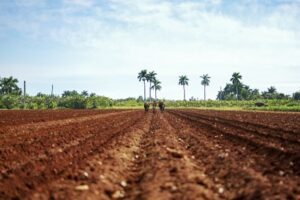
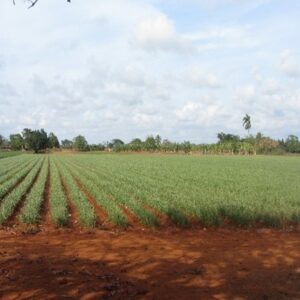
Santa Ana Farm
This farm is a replica site, it belongs to the Güira de Melena CCS “Frank País” agricultural company of the Güira de Melena municipality in the Artemisa province. Since 2022, it has been recognized as an Initiate in Sustainable Land Management.
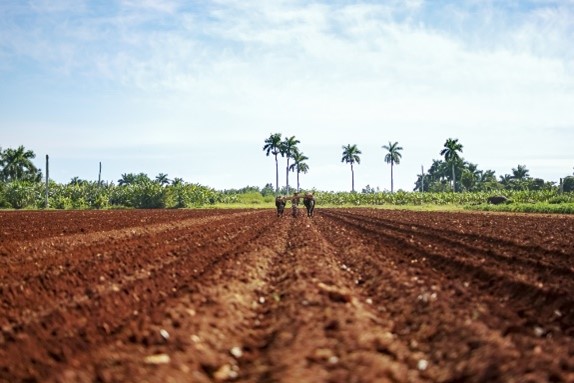
It has an area of 19.33ha, for agricultural use with temporary crops. These are: Garlic (Alliun sativum), onion (Alliun cepa), lettuce (Lactuca sativa), corn (Zea mays), pepper (Capsicum annuum), sweet potato (Ipomoea batatas), banana (Musa sp.div), tomato (Lycopersicum sculentum), beans (Phaseolus sp.), broad bean (Vigna unguiculata). Bean and bean crops have been severely affected by Megalotrips usitatus for approximately a year. The cultivation of sweet potato (Ipomoea batatas) has also been affected by tetouan (Cylas formicarius).
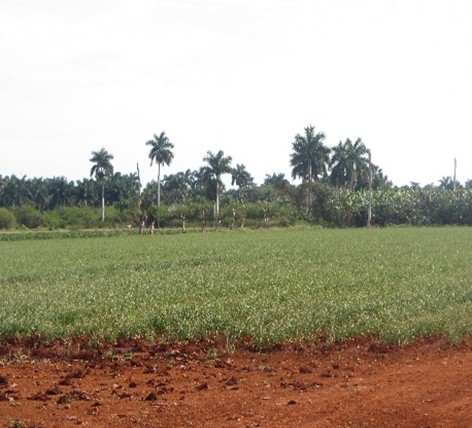
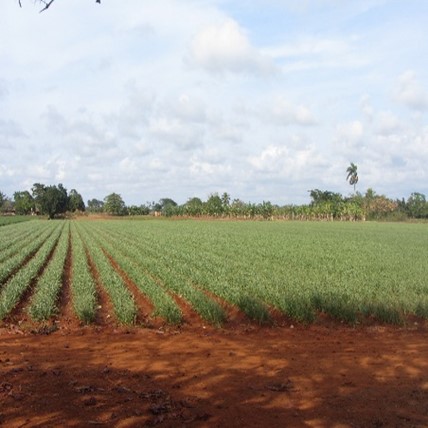
Scattered there are fruit trees such as guava (Psidium guajava), almond (Terminalia catappa) and avocado (Persea Americana); and citrus fruits, such as lemon (Citrus limon) and sour orange (Citrus sinensis), the latter have been decreasing due to the attack of the bed bug and the aggressiveness of the fumigations carried out in the area.
In the gardens there are ornamental plants with and without flowers. The living fences and windbreak curtains, which delimit the entire property, are made of royal palm (Roystone regia), almond (Terminalia catappa) and seedbed (Bursera simarouba).
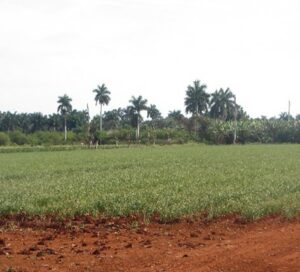
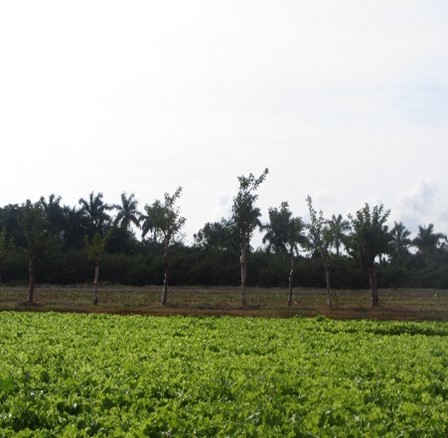
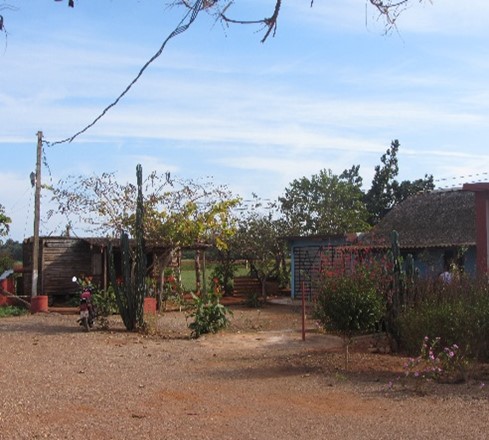
At this time, this site is developing the breeding of semi-rustic dark-skinned pigs. It is only confined at night and during the day it is free feeding on natural vegetation.
The Santa Ana farm is located in the southeast center of the Cajio Popular Council, in an area that has a regular relief, characterized by very low plains. It is located in the area of Cuenca Sur de la Habana, the main underground aquifer south of the capital, framed within a karst plain where both the feeding and the circulation of groundwater occur under a free hydrogeological regime.
Drinking water is treated with sodium hypochlorite. The solid waste generated on the farm is mainly excreta from small livestock and crop residues.
On the farm, most of the area is typical red ferralitic type soil, another part is red Rendzina type soil and to a lesser extent towards the southern part there is typical humic Gley type soil. The soils are type II, III and V (Productive, moderately productive and little productive). Soil preparation work must be carried out when the soils do not have excess moisture because their structure deteriorates considerably, as well as maintaining crop rotation as an effective way to conserve soil nutrients and thus obtain high productive capacity. Soil preparation must also be carried out taking into account the effective and pedological depth to prevent the source material from mixing with the organic or superficial part of the soil in shallow soils.
Biodiversity
Vegetation
The farm borders, to the south, the degraded mesophilic semi-deciduous forest, which constitutes a transition to the very low coastal plain. In this forest there are species of almond (Terminalia catappa), palm, aroma (Acacia farnesiana), marabou (Dichrostachys cinerea), carob (Albizia lebbeck), seedwood (Bursera simarouba), yana, among others. There are toads, herons and clarias, the latter attacking the nesting sites of the former and all the small animals that exist in the area, becoming a true invasive species.
Fauna
The presence of two phyla, six classes, 19 orders, 32 families and 39 species was identified in the study area. Among invertebrates, insects constitute the most diverse class (9 species). For their part, vertebrates are represented by amphibians, birds and mammals, with birds being the most diverse group (21 species) followed by mammals (11 species). Only 13.04% of the recorded species are endemic to Cuba. An analysis of species richness and endemism by class shows birds as the vertebrates with the highest percentage of endemism within the study area.
The fauna is represented, fundamentally, by birds such as querequeteyes (Chordeiles gundlachii), mockingbirds (Mimus polyglottos), bijiritas (Vermivora sp.), zunzún (Chlorostilbon ricordii), white-headed dove (Patagioenas leucocephala), gorse (Columbina passerina), muleteers (Coccyzus merlini) and, to a lesser extent, by green woodpecker (Xiphidiopicus percussus). According to references, a greater influx of quail (Colinus virginianus), cattle heron (Bubulcus ibis), sparrow (Passer domesticus) and the white-tailed pigeon (Zenaida macroura) is being observed. There is also a large presence of bats (Fam. Chiroptera). Among the rodents, rats (Rattus rattus) and mice (Mus musculus) appear. Among the insects there are flies, mosquitoes, gnats, bees, etc. The influx of butterflies has increased. Among the reptiles, the lizards, the majases and the snakes. Among the domestic animals there are chickens, bananas, pigs, dogs and cats. Only the presence of one threatened species was recorded, with the category of vulnerable (VU): Passerina ciris (butterfly), it is a migratory species and therefore does not constitute an endemism of Cuba, where it has a national distribution. Three animal species considered as invasive exotics were found: Wasmannia auropunctata (santanica), Rattus rattus (black rat) and Mus musculus (guayabito).
Given the interconnection between the environment, natural resources, natural threats and food security, it is necessary to reduce the vulnerability of biological diversity by adopting sustainable management strategies for natural resources such as soil, water and forests, thus improving the surrounding environmental matrix. Simultaneously, the implementation of agroecological practices will be necessary to stabilize agro-ecosystems, including soil conservation, water harvesting and other measures to regulate water management and quality, as well as crop diversification, restoration of degraded lands and others.
